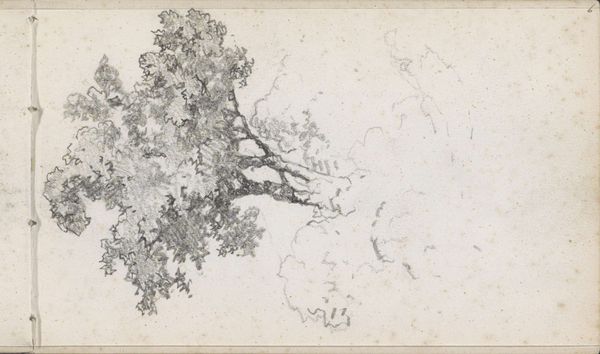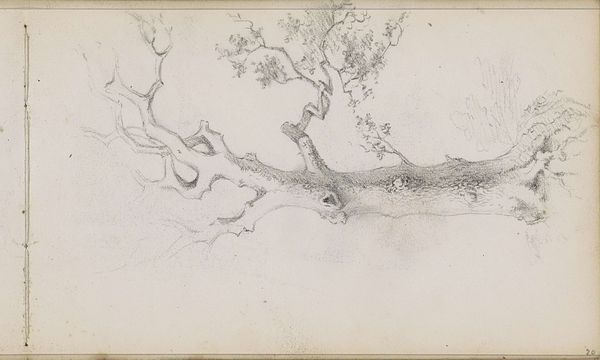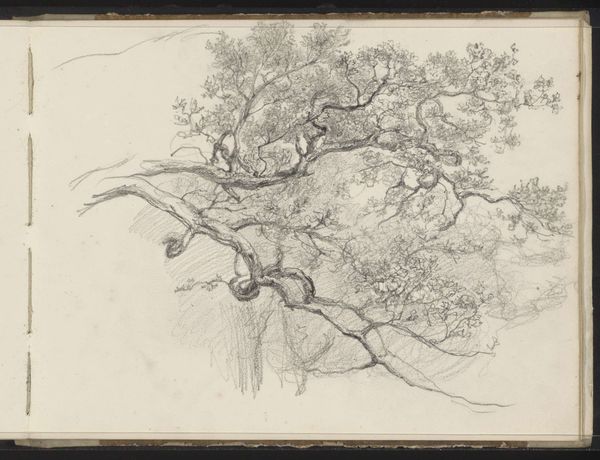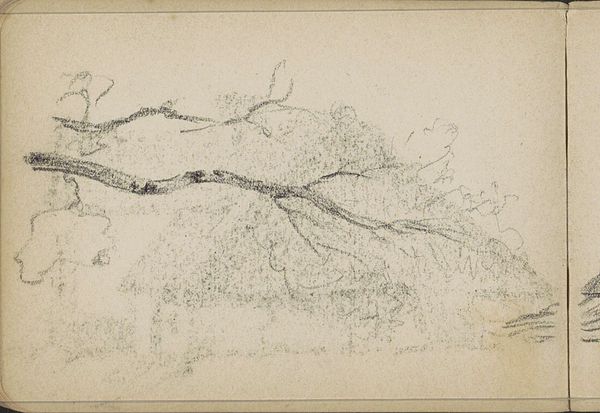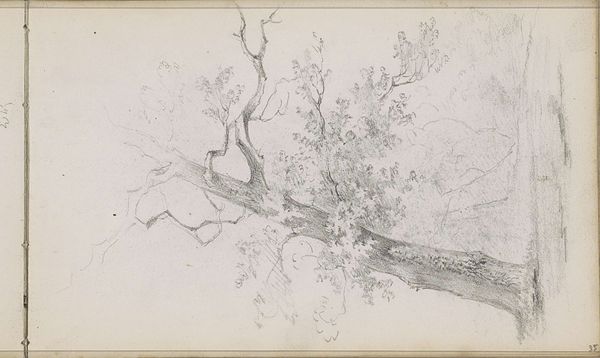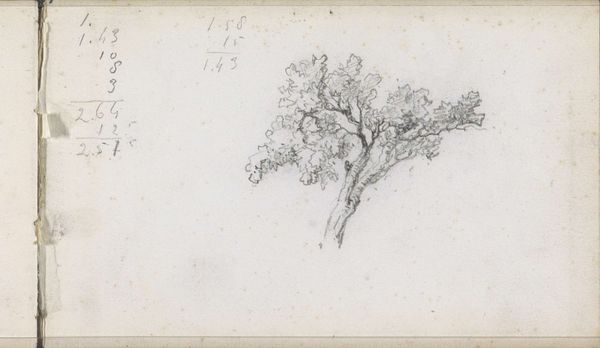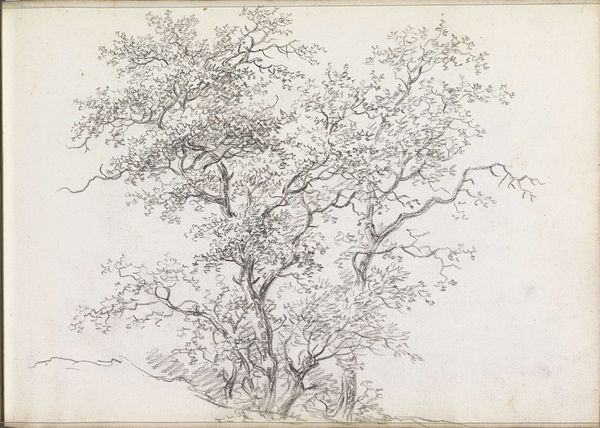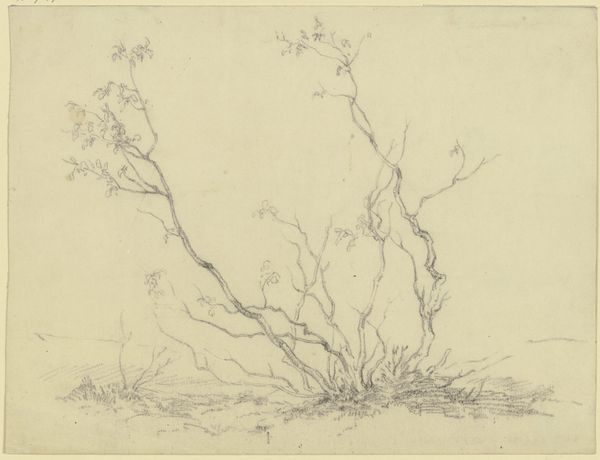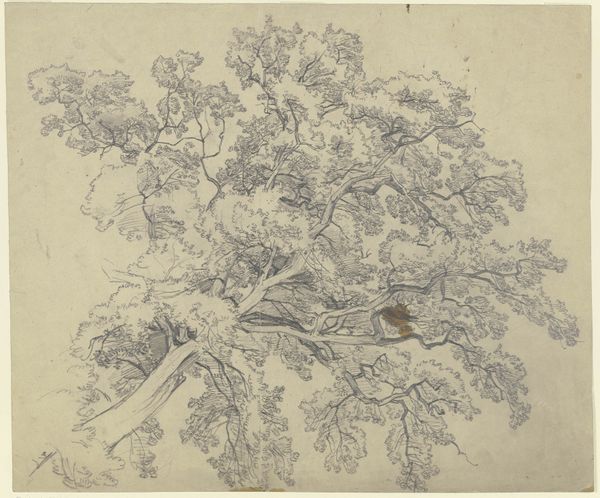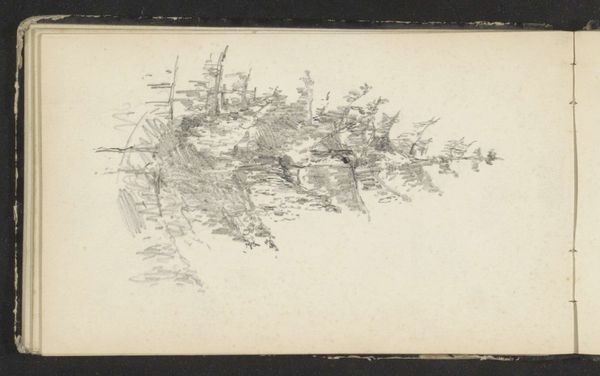
Copyright: Rijks Museum: Open Domain
Editor: Here we have Maria Vos’s “Boom in blad,” a drawing in pencil and colored pencil from around 1863-64. I find the textures in the foliage captivating, but overall it feels a bit… incomplete? How do you interpret this work? Curator: The incompleteness, I think, is key. Consider the 19th century’s rapid industrialization and urbanization. Naturalism, Romanticism… they were often entwined, weren't they? How might this seemingly simple drawing of a tree also represent a yearning for a lost connection to nature, a silent protest against societal shifts? Does the rawness, the sketched quality, enhance or detract from this potential reading? Editor: That's a fascinating perspective! So, you're saying the "unfinished" quality might be intentional, reflecting a broader cultural anxiety about the disappearing natural world? Curator: Exactly. Vos was working within a period where artists were grappling with these massive changes. Can art offer an escape, a form of resistance, or merely a lament? Editor: It definitely gives me a lot to consider regarding art's role in reflecting societal anxieties. I appreciate that! Curator: And for me, thinking about Vos’s piece as an invitation for a dialogue – about environment, about loss, about how we find and represent beauty even amidst chaos - is precisely why it still resonates. Editor: Thanks so much! This was extremely insightful!
Comments
No comments
Be the first to comment and join the conversation on the ultimate creative platform.
